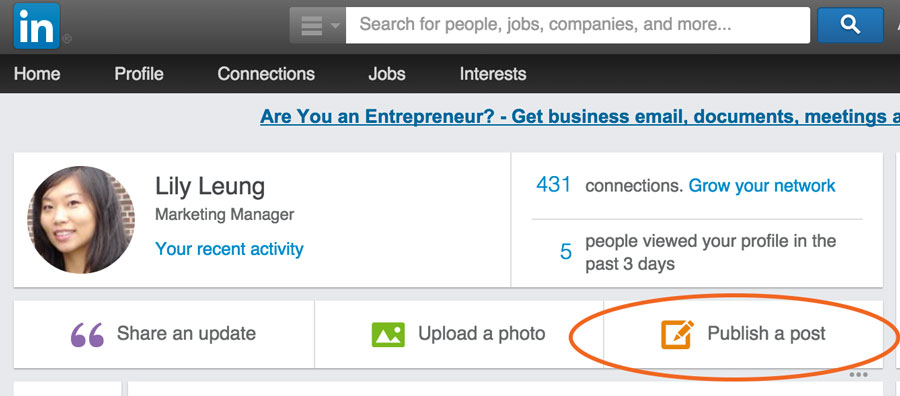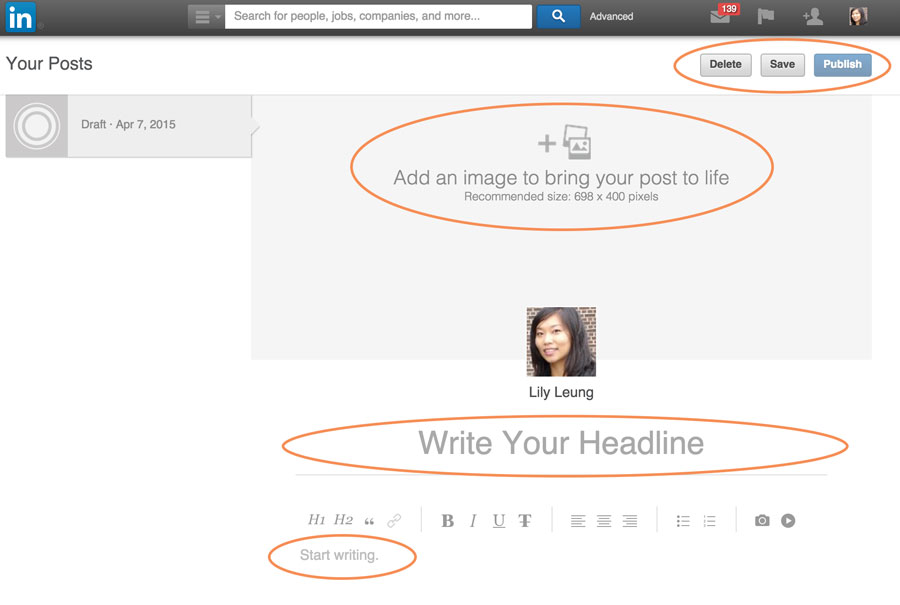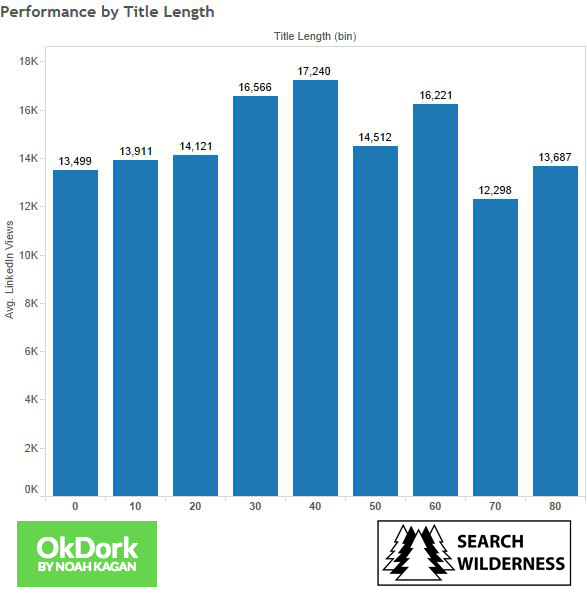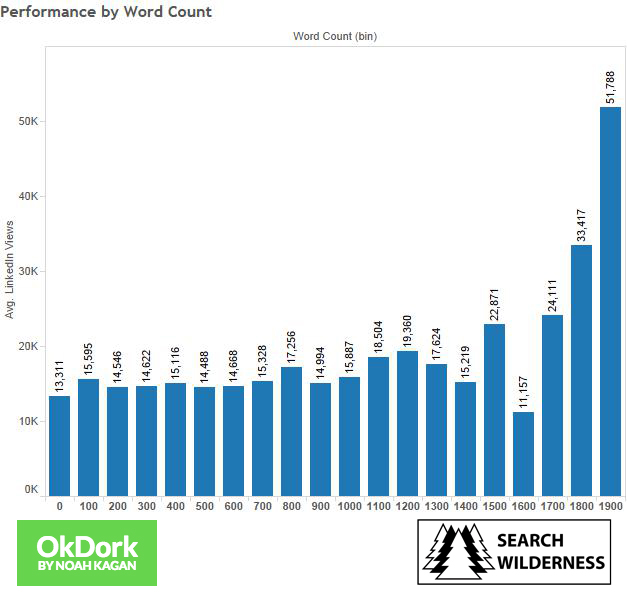
Last year, LinkedIn opened up it’s publishing platform to all their users, giving professionals an opportunity to get more exposure and visibility across both their current network and beyond. In addition to publishing content on your own company blog, publishing on LinkedIn’s platform can help you get even more reach, especially if you’re already using LinkedIn.
1. How to create a post
From the default dashboard you see after logging in to LinkedIn, click on the “Publish a post” button.

You’ll be taken to the LinkedIn Publishing dashboard where you can see previous posts or immediately start writing a new post. The visual editor is similar to what you’d see in Microsoft Word; you can bold, italicize, create lists, align text, add subheadings, links or images. There’s also a save button if you don’t finish the article right away. In addition, you have an option to include a header image which will also be used as the thumbnail image when it’s shown to your network.

2. Keeps titles 40-49 characters long
Similar to blog post titles, keep your LinkedIn post titles as simple, short and straight forward so that readers know exactly what they can expect to read in the article. It might be tempting to write a fancy or cryptic title; however readers are less likely to click if they don’t understand the context.
LinkedIn doesn’t show you how many characters your title is, but you can use Charcounter or a Word document to count.

3. Use 5 sub-headings
Using subheadings are a great way to organize your article and allow readers to skim your content. Studies have found that articles with 5 sub-sections get the most views, followed by articles with 9 subheadings.

4. More detail is better than less
In a study of 3,000 most viewed LinkedIn posts, it was found that posts with 1,900 words get up to 4x the number of views than posts with fewer words. These also get more LinkedIn likes, shares and comments. When you’re crafting your LinkedIn post, don’t hesitate to include more details, examples and explanations to make it a useful long form piece of content.
The LinkedIn Publishing dashboard doesn’t count how many words your article is, but you can use Charcounter or a Word document to track your word count.

5. Keep the tone neutral
LinkedIn posts with a neutral sentiment performed at least 70% better than articles with negative or positive undertones in terms of the number of views and comments. To gauge whether your article is positive or negative, you can paste your text into a tool like Alchemy Language which will score the article for sentiment.
Writing content for posting on LinkedIn can take just as much time as writing content for your company blog. However, the LinkedIn publishing platform is worth looking into as part of a broader inbound and content marketing strategy for your business, especially if you’re in B2B.
For more regular tips on using social media to grow your professional or B2B company’s profile, follow us on LinkedIn or Twitter.
